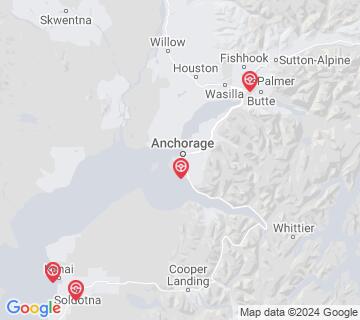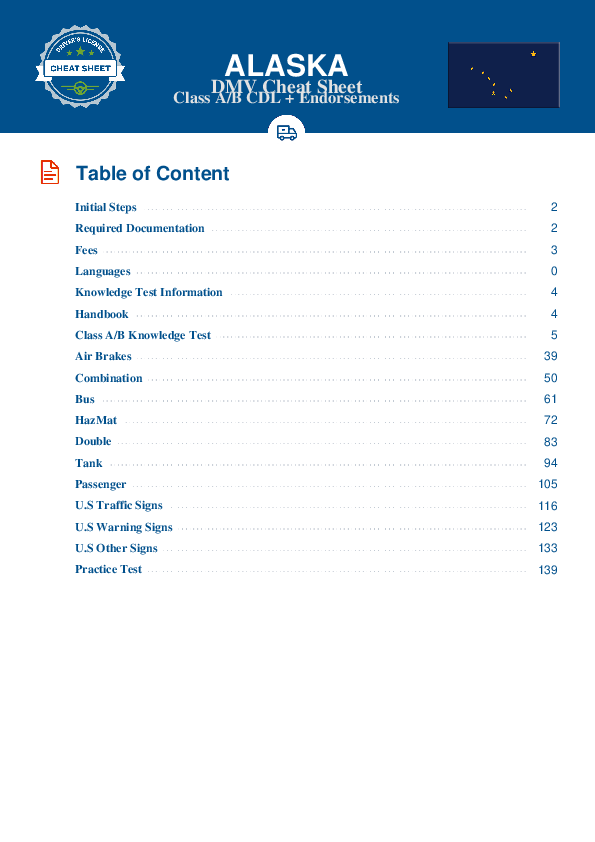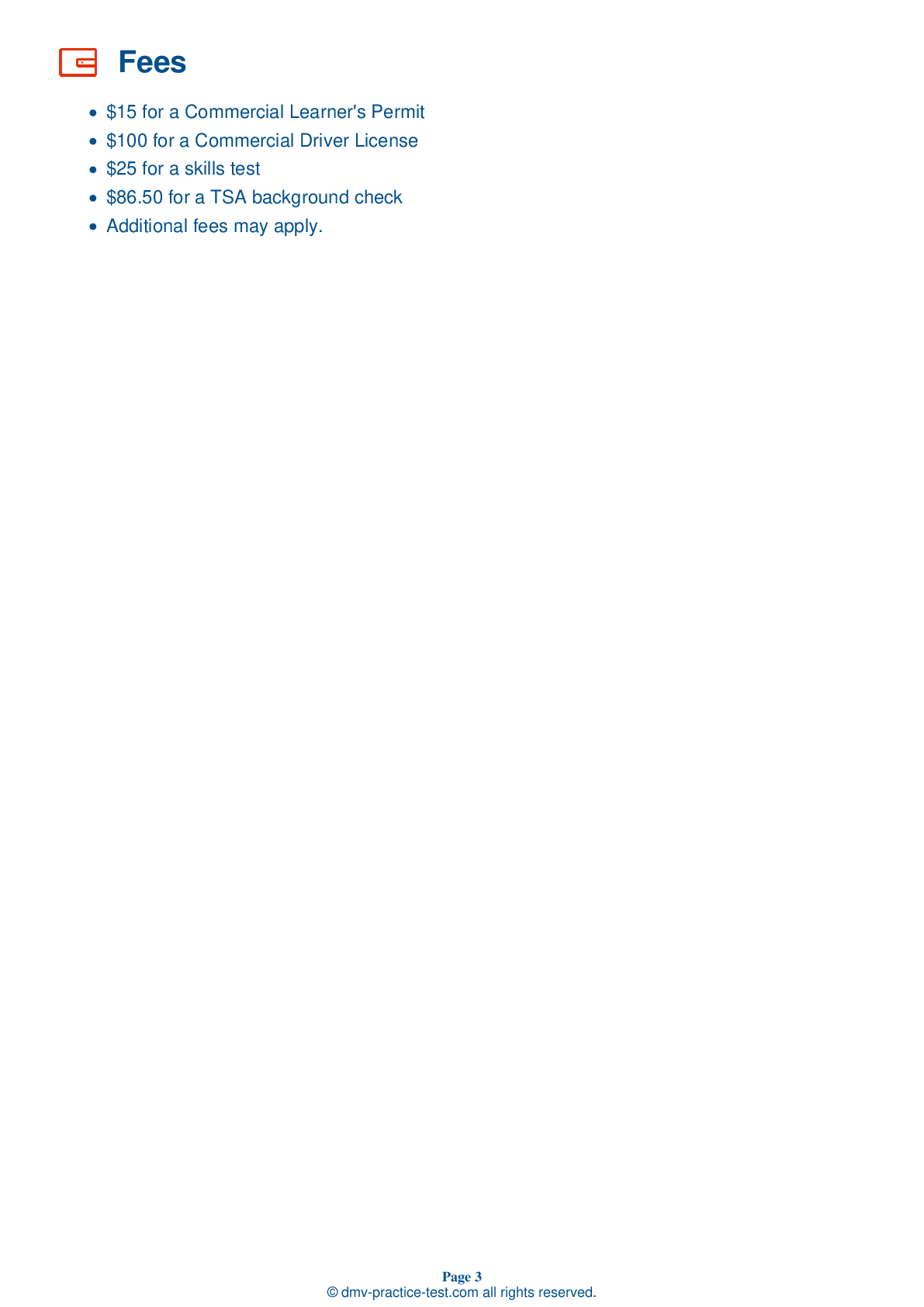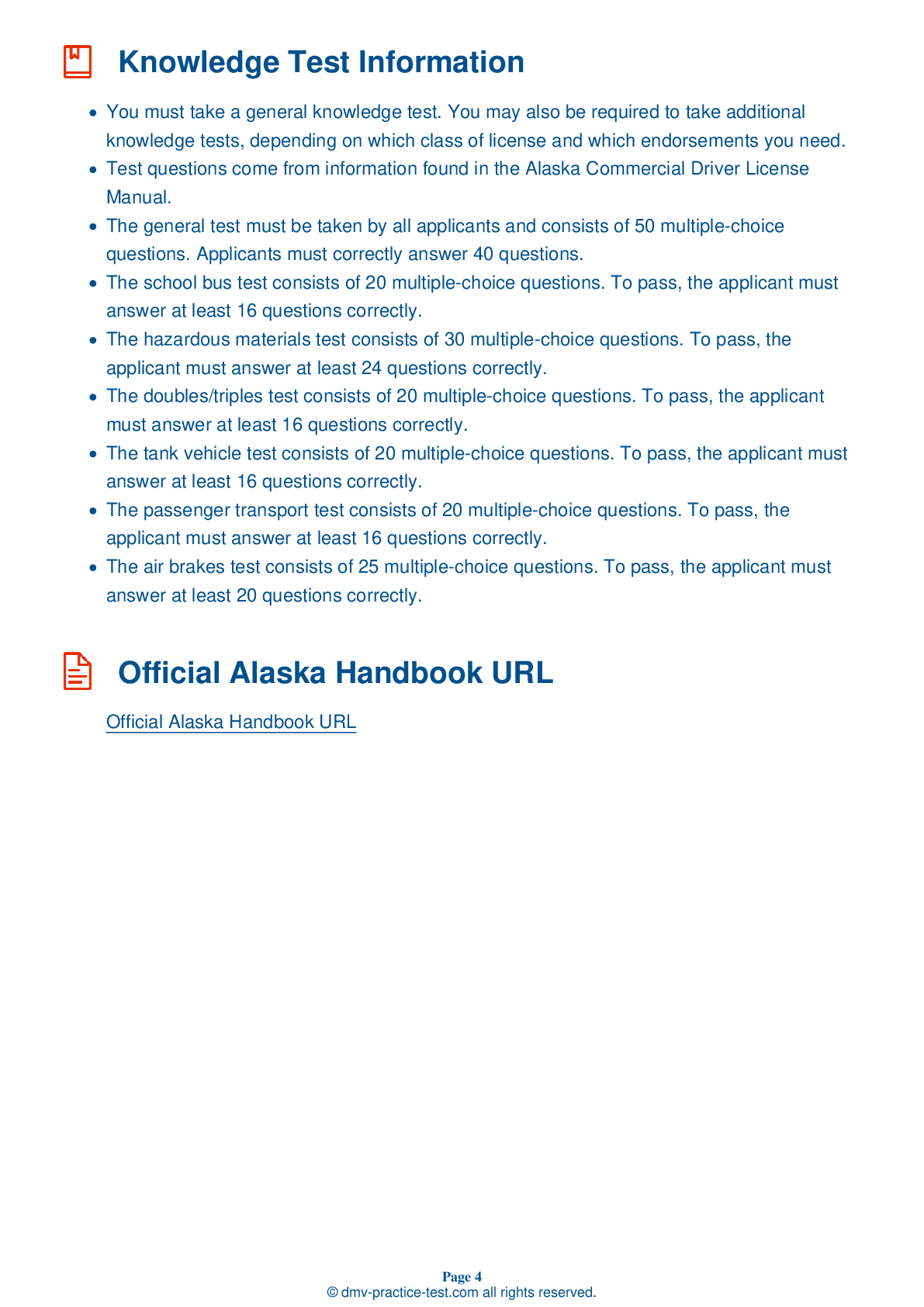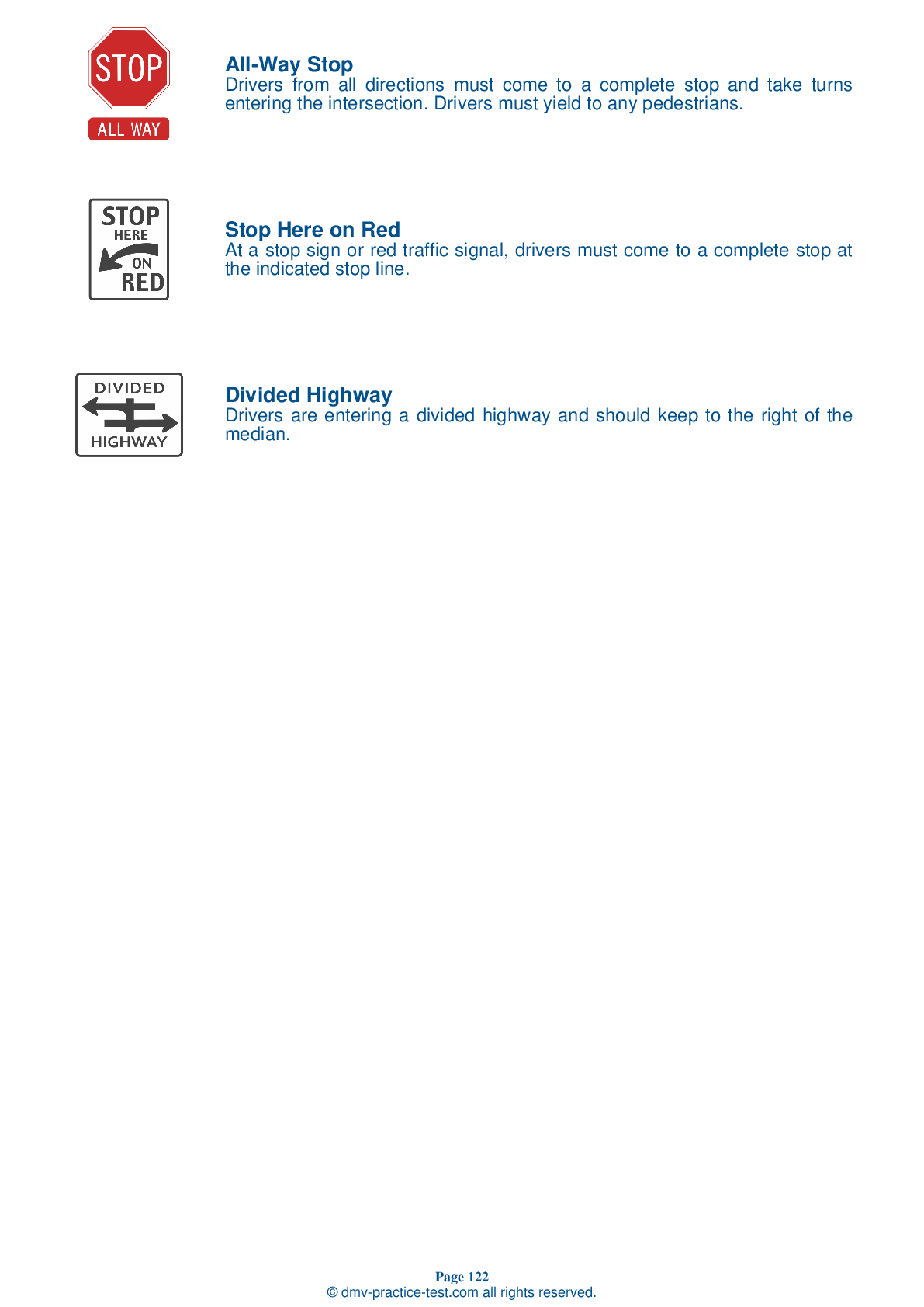Knowledge Test Class A #1
Class A Driving Test | Alaska 2025 #1 Page 5 of 7
Train for FREE online with our Alaska class A license test. The official exam test consists of several obligatory parts, with all of them checking your knowledge of different blocks of road rules. If you need to obtain a AK CDL class A permit in 2025, practice as much as possible. Free sample tests published on our website will help you check and improve your knowledge and boost your grades. Please bear in mind that CDL class A requirements may vary from state to state.
50
40
20
29 . If a load is 10 feet long, it should be secured by a minimum of:
Cargo should be restrained by at least one tie-down for every 10 feet of cargo. However, all cargo should have at least two tie-downs, no matter the size of the cargo.
30 . In cool weather, as the temperature begins to rise and ice begins to melt:
As the temperature begins to rise and ice on the road begins to melt, the road surface will often become even more slippery. Water from the slight melting will sit on top of the ice, decreasing the available traction even more. Always decrease your speed and drive with caution when traveling on slippery surfaces.
31 . When driving a vehicle, rough acceleration is:
When accelerating, speed up smoothly and gradually so your vehicle does not jerk. Rough acceleration can cause mechanical damage.
32 . When using a fire extinguisher on a fire, you should:
When using a fire extinguisher, you should stand as far away from the fire as possible. Aim the extinguisher at the base of the fire, not at the flames. If you are not sure which kind of extinguisher should be used on a fire, particularly a hazardous materials fire, you should wait for the firefighters to arrive and allow them to extinguish it.
33 . A dual air brake system:
A dual air brake system is made up of two separate air brake systems. The systems share a single set of brake controls, but each has its own air tanks, hoses, and lines. One system typically operates the regular brakes on the rear axle or axles while the other system operates the regular brakes on the front axle.
34 . Dry bulk tanks:
Driving with dry bulk tanks requires special care because they usually have high centers of gravity. It is also important for drivers to be prepared for the contents to shift in transit.
35 . When leaving your vehicle unattended:
In general, you should always use the parking brake when parking your vehicle. However, you should not apply the parking brake if your brakes are very hot or if your brakes are wet and temperatures are below freezing.
Search the best driving school in your neighbourhood
2025 Alaska | Frequently Asked Questions
A CDL Class B license in Alaska allows the holder to operate any single vehicle with a Gross Vehicle Weight Rating (GVWR) of 26,001 pounds or more, or any such vehicle towing a vehicle not exceeding 10,000 pounds GVWR. This typically includes commercial buses, dump trucks, delivery trucks, and garbage trucks.
A Class B CDL license in Alaska allows the holder to operate vehicles such as city buses, tour buses, segmented buses, delivery trucks, dump trucks with small trailers, and garbage trucks. It's valid for any single vehicle with a Gross Vehicle Weight Rating (GVWR) of 26,001 pounds or more, or such vehicle towing a vehicle not exceeding 10,000 pounds GVWR.
To acquire a Class B CDL license in Alaska, you must be at least 18 years old (21 for interstate driving), possess a valid Alaska driver's license, pass a vision test, and successfully complete a general knowledge test. You must also pass a skills test in the type of vehicle you plan to drive, which includes a pre-trip vehicle inspection, a basic vehicle control test, and an on-road driving exam.
In Alaska, you must be at least 18 years old to qualify for a Class B CDL license for intrastate driving (within state borders). However, you must be at least 21 years old to engage in interstate driving (across state lines) or to transport hazardous materials.
While not always necessary, specific endorsements may be required for a Class B CDL license depending on the type of vehicle you plan to drive or the cargo you plan to transport. These could include endorsements for passenger vehicles, school buses, tank vehicles, or hazardous materials. Each endorsement requires passing a separate knowledge test and sometimes a skills test.
The Class B CDL skills test in Alaska encompasses three main areas: pre-trip vehicle inspection, basic vehicle control, and on-road driving. The pre-trip inspection examines your ability to assess your vehicle's safety. Basic vehicle control tests your ability to handle, turn, and stop the vehicle. On-road driving assesses your ability to drive safely in traffic.
Yes, Class B CDL license holders in Alaska are limited to operating vehicles weighing more than 26,001 pounds or towing vehicles weighing less than 10,000 pounds. They can also operate buses with a seating capacity of 24 passengers or more. However, they cannot drive Class A vehicles unless they have the appropriate endorsements and additional training.
In Alaska, the written Class B CDL test is primarily administered in English, in accordance with federal regulations. This is to ensure that all commercial drivers can read and understand traffic signs, signals, and other driving materials in English. Therefore, it's not typically offered in other languages.
Yes, you can request accommodations for the Class B CDL written exam if you have a disability. The Alaska DMV is committed to providing reasonable accommodations under the Americans with Disabilities Act. You'll need to provide documentation of your disability and specify your needed accommodations. It's recommended to make this request well in advance of your test date.
If you don't pass the Class B CDL written test in Alaska, you can retake it. However, you must wait at least one day before retesting. Keep in mind, there may be additional fees for each retest. It’s also recommended to study thoroughly and possibly seek additional training before attempting the test again.
